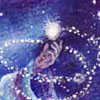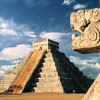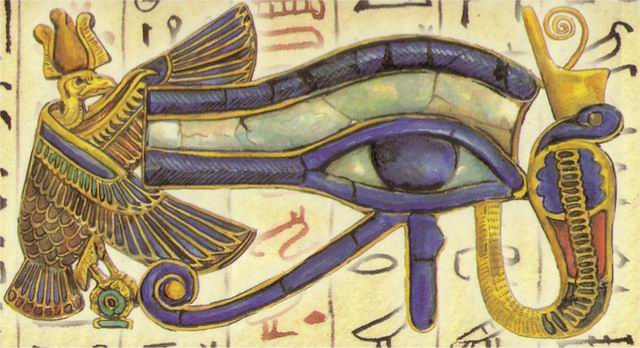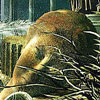We Are Not The First – Part II
 by Andrew Tomas
by Andrew Tomas
At the birth of Sumer, a weird creature landed on the shores of the Persian Gulf. It looked like a large fish but in its mouth was a human face. This monster, which could have been a cosmic visitor in a space suit after the ‘splashdown’, spoke to the primitive dwellers of Mesopotamia and taught them how to build cities, compile laws, plant wheat, write down thoughts, count with numbers and observe the stars. This fish-like god, known as Oannes, civilized the savages and humanized their lives. His scientific legacy was of the highest quality, and the people of the Tigris and Euphrates valleys became great astronomers and mathematicians.
Far away from Babylon, in South America, a tall white man came from the land of dawn. He revealed to the Indians the secrets of civilization and inspired them with high ethical ideals. When his mission was completed, like Oannes, he disappeared into the sea. His name was Viracocha – ‘the foam of the sea’. Yet another legend about a missionary from the stars, whose ship could sail on water as well as in space?
In recent years, in Tassili, northern Sahara, peculiar rock paintings were discovered. They depict men in what seem to be diving suits or space suits, without mouths. One six-meter rock image was aptly called the ‘Martian’. Since the pictures are 9,000 years old, they are not likely to represent men with headgear protecting them against sand, as some skeptics have suggested, as at that time the northern Sahara was covered with rich vegetation!
This theory of the importation of science from a cosmic source is within the framework of scientific speculation.
A few years ago, Frank Drake, the American astronomer, theorized that space visitors could have left caches of artifacts, tagged with radioactive isotopes. A scientifically mature humanity, reaching the level of the intelligence of cosmic travelers, would sooner or later spot these treasure vaults and discover souvenirs from a distant star. Perhaps the day has now arrived when we should test his theory by means of radiation detectors.
‘Let the archaeologists take up the search for secret repositories established by cosmonauts. What if there were an immense treasure of the most precious scientific knowledge stored for us to inherit?’ asks Dr. M. M. Agrest of Russia.
Dr. Carl Sagan, an eminent astrophysicist in the U.S., speculates along similar lines: ‘The earth may have been visited many times by various galactic civilizations during geological times and it is not out of the question that artifacts of these visits still exist.’
Professor Hermann Oberth, a pioneer in astronautics, stated a few years ago that the visitors from space ‘have been examining the earth for centuries.’ He believes that an advanced galactic civilization could, by sharing its knowledge with us, raise our science to a level which would normally take 100,000 years to reach. Perhaps something of this sort has already taken place in the past history of humanity!
Interstellar travel seems to be a chimera because of the vast distances separating solar systems. To form an idea of the immensity of the universe, let us compare the sun to a billiard ball. Then the earth would be but a full-stop on this page, placed 7.60 meters from the ball. The orbit of Pluto, which forms the borderline of our solar system on this scale, would be 300 meters from the sun. But the nearest star — Proxima Centauri, on the same scale would then be 2,000 kilometers away!
However, antimatter fuel and photon rays as well as the shrinkage of time in a starship moving with a velocity close to that of light, could make interstellar travel a reality of the future. In fact, blueprints of these spaceships are already in existence, designed by the astronautical engineers of the U.S. and Russia.
But what will be a technological achievement to us tomorrow, may already be a means of transport to some other galactic civilization today. There is an eternity of time in the infinite universe. An older cosmic race could have mastered interstellar flight a million years ago, and may even now be cruising in the expanses of our galaxy. They could have come here in bygone ages, and perhaps some folklore may refer to these visitations.
The view that contacts between worlds have taken place in the past, are occurring at present, and will happen in the future, is shared not only by science fiction writers but by some men of the highest calibre in academic circles.
In May, 1966, it was my privilege to meet in Nuremberg, Germany, the ‘father of modern rocketry’ – Professor Hermann Oberth. ‘I think over forty percent of the stars have planets and intelligent life might exist on some of them. To tell you the truth, this is the main reason why I became interested in astronautics in my early youth,’ said the distinguished scientist.
When I introduced the question of interstellar communication and possible surveillance of our planet by cosmonauts from another world in space, the professor’s reaction was this: ‘It is the duty of the scientists to investigate this possibility.’
In Paris in March, 1968, I had an interesting discussion with Dr. J. Allen Hynek, Director of Dearborn Observatory and Professor of Northwestern University, who was the first in the world to employ satellites in astronomical observation.
‘What percentage of solar systems could be suitable for life?’ I asked.
‘In my student days life in the universe was considered to be a freak. But now it turns out with modern theories of stellar evolution that, at least for a large class of stars, a planetary system may occur in the natural process of growth. To say that our star – the sun, is the only one to have planets will be akin to saying, for instance, that your cat can have kittens and no other cat in the can have them. From the astronomer’s viewpoint it is cosmically provincial to think that our solar system is the only one. There must exist around every star a “temperate zone” in which conditions would be suitable to life.’
‘Is the possibility of visitations from superior galactic civilizations within the bounds of scientific speculation?’
‘It is certainly within its bounds. As an astronomer I can readily admit the strong possibility that there are other civilizations in our galaxy. But the engineering problems of getting here completely staggers my imagination. Nevertheless, I am perfectly willing to admit the reality of the ETI’s (Extraterrestrial Intelligences),’ responded Dr. Hynek.
During my stay in Moscow in November, 1966, I met Alexander Kazantsev, a famous science fiction writer. After World War II he gave a new interpretation to the Tunguska Meteor catastrophe of 1908 which devastated a huge area in Siberia. He theorized that the explosion was caused by the detonation of a spaceship from another planet. This hypothesis received an active support from Boris Liapounov, a science writer of Russia.
They speculated that a cylindrical body could not have been a meteor. Besides it never reached the earth as it blew up at an altitude of approximately 20,000 feet above the ground. Before the explosion, the object performed an erratic maneuver changing its course. The permafrost or the arctic soil frozen for thousands of years, was not pierced by the fragments of this ‘meteorite’. According to witnesses, the explosion was blinding even in daylight. Great devastation was brought about in the wild Siberian forest by it. When cutting the trees showed an unusually thick ring for the year of 1908, suggesting radioactivity.
I visited Kazantsev in Moscow to get more facts about the Siberian mystery. While we were in the midst of an exciting conversation about the possibility that we earthmen might be the ‘grandsons of Mars’, and that certain episodes from biblical history could be records of the visits of cosmic guests to this planet, the door bell rang. The host left the study giving me an opportunity to make notes of this memorable dialogue.
In a few minutes Alexander Kazantsev returned with a booklet in his hand and a smile on his face. ‘We were right after all,’ he said, passing me a freshly-printed brochure marked ‘The United Institute of Nuclear Research, Dubna. No. 6-3311’. It contained a radiochemical analysis of tree ash from the site of the Tunguska explosion and alluded to the possibility of a contact of antimatter with matter.
One paragraph impressed me particularly: ‘In other words, we are coming back (no matter how fantastic it may seem) to the supposition that the Tunguska catastrophe was brought about by the crash-landing of a spaceship propelled by a antimatter fuel.’
My friend Boris Liapounov showed me in Moscow a 1930 magazine Vestnik Znania which featured an article on Life in Other Worlds. The great pioneer of astronautics Tsiolkovsky had this to say on the subject of interstellar communication: ‘If the machines of intelligent beings of other worlds have not visited the earth, it does not follow that they have not visited other planets. Secondly, to assess the fact of non-visitation of our world, we have at our disposal but a few thousand years of the conscious life of mankind. Think of the past and future ages!’
In the same journal, Professor N. A. Rynin wrote that: ‘If we turn to the tales and legends of hoary antiquity, we shall notice strange coincidences among legends in countries separated by oceans and deserts. This similarity of myths speaks for the visitation of earth by the inhabitants of other worlds in time immemorial.’
These fantastic ideas have never been foreign to me since my school days. If I am permitted to relate a personal experience from my early life in China, I will refer to a lecture given by me in Shanghai in 1941. In this address I spoke of ‘communication between planets by spaceships propelled by unknown energies’, and the visits of superior intelligences to our planet earth. But my audience was not quite ready to accept the existence of beings in other cosmic worlds, and the lecture was not a great success.
But in our present era of space probes to Mars and Venus, and the voyages of earthmen to the moon, the public resistance to the concept of plurality of inhabited planets has given wide cracks.
The problem of life in other stellar systems hinges on four basic questions:
–Is life on earth a unique phenomenon unparalleled in a universe of milliards of solar systems?
–Are we then alone in a dead universe?
–Is life potentially locked within the atom and therefore a universal attribute of matter?
–Are some worlds inhabited by rational beings at different stages of evolution?
Today in this Age of Space Travel, there are but few people who would answer the first two questions in the affirmative.
Although the moon is desolate (nor does Mars look like a breeding ground for intelligent life), it is certain that somewhere in the limitless expanse of our galaxy with its 150 milliard suns, there are numerous planets similar to our earth which could have produced their own versions of life and consciousness.
To a cosmic tourist approaching the earth, our planet might give the impression of being uninhabited. In fact, that was the impression of Captain Lovell, an Apollo 8 astronaut, who broadcast this remark on his homeward flight from the moon: ‘What I keep imagining is that I am some lonely traveler from another planet. What would I think about the earth at this altitude (333,000 kilometers)? Whether I think it would be inhabited or not?
The hypothesis of contacts of galactic civilizations with the men of earth in past ages can account for the following unexpected knowledge in remote antiquity:
–How the ancients were aware of the two moons of Mars.
–How the astronaut Hou Yih of China described the moon as ‘desolate, cold and glassy’, forty-three centuries ago.
–How Greek philosophers were aware of the vast distances between the stars.
–Why myths about the descent of sky beings are global in scope.
–How antique thinkers were aware of planets beyond Saturn, which could not be seen without a telescope.
–How Sanscrit texts estimated the life span of the universe in milliards of years as does modern science.
–How the Epic of Etana, the Book of the Dead and the Book of Enoch drew a picture of extraterrestrial space.
–How Saturn, although a dim stellar body, but actually the second largest planet in our system, was given the prominence it deserved in ancient Pantheons.
Besides the importation of science from another stellar world or the existence of a cultural legacy from a vanished civilization, there is a less fantastic source of knowledge which could account for some of the peculiarities of the history of science.
In the course of the past 35,000 years man has been slowly reaching his present level. Since about 8,000 B.C. he began to change his personality of a roving hunter for that of an established farmer and city tradesman.
The orthodox scientific view has no provision for an unknown advanced civilization in prehistory. It does not entertain ideas about culture-bearers coming from cosmic space and accelerating the progress of mankind on this planet.
Anthropologists say that in the course of a long period of the development of the primates, a true man appeared. The Cro-Magnon prospered as a hunter and fisherman. Members of a clan sat around the bonfire at night, listening to the elders relate their experiences, transmitting their accumulated knowledge to younger generations.
When man began to cultivate plants, domesticate animals and perfect his tools and weapons, he stepped over the threshold of civilization. That took place about 7,000 years ago.
Many of the accomplishments of humanity in former epochs which we outlined in this boo, can be explained by the march of progress.
But orthodox science is not in a position to offer an explanation to the unsolved mysteries of the history of science which have been examined in this work.
Now we come to the crucial point. Did the ancients receive a scientific legacy from the survivors of an older civilization destroyed by tidal waves and the fires of submarine volcanoes in a geological upheaval? Or was primordial science and culture brought to this world by the space visitors who had eons ago reached the level of evolution on which we are standing now?
Actually there is no contradiction between the two hypotheses. As the great Tsiolkovsky said, our history is too brief to estimate how often visitations from space have occurred in the past. However, the American astrophysicist Carl Sagan believes that they take place at 5,500 year intervals.
If history stretches beyond the 7,000 year limit afforded to it by the historians, and if men lived in the last interglacial age, a descent of sky beings upon earth could have started an epoch of culture. If the technology of extraterrestrial intelligences was sufficiently developed to enable them to span astronomical distances, their way of life and thinking must have been equally advanced.
The star-born could have founded the world’s first empires, ruled as the Sun-Kings and then passed on their authority to the so-called ‘solar dynasties’. This speculation is confirmed by a belief common to the legends of Egypt, India, China, Greece, Mexico or Peru which affirm that there was a time when the ‘gods’ reigned over mankind.
This conviction is still alive in India and it has been my experience to learn how strong it is. Upon my arrival, a garland of tropical flowers was put on my neck by Indian friends who prostrated at my feet to honor me as ‘a god’. ‘We can’t take any chances as you may be a sky being from the stars merely pretending to have come from Australia,’ the Indians said, in response to my embarrassment and objections.
The principal thesis of this work that the source of civilization lies farther back in time, will one day be vindicated. the origin of civilization is constantly receding as science advances. since true science is fluid and modified by new evidence, it is not improbable that a great deal of the speculation offered in this study of the history of science will be found reasonable in the end.
Excerpt from We Are Not The First – full pdf download here.
See Part I here.
Posted in Other Topics, True History of Manwith comments disabled.





